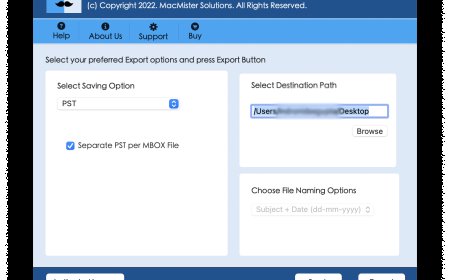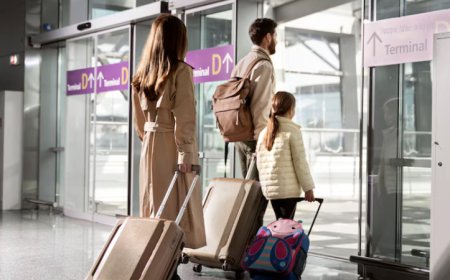How to Plan the Perfect Trip to Sri Lanka: A Step-by-Step Guide
Sri Lanka is a small island nation with big offeringsfrom golden beaches and lush rainforests to ancient cities and warm hospitality. Whether you're a first-time visitor or a seasoned traveler, planning a trip to Sri Lanka can feel overwhelming due to the variety of experiences it offers. This step-by-step guide will help simplify your travel planning so you can make the most of your journey.
Step 1: Decide the Best Time to Visit
The weather in Sri Lanka varies across regions, so choosing the right time depends on where you plan to go. For the west and south coasts, the best time is between December and March. If you're heading to the east coast, May to September is ideal.
Travelers looking to explore central highlands like Nuwara Eliya and Ella can plan their visit between March and May, when the weather is cooler. Planning your trip around local festivals such as Vesak or Kandy Esala Perahera can also add cultural depth to your experience.
Step 2: Choose Your Route Based on Interests
Sri Lankas compact size allows you to explore multiple regions in a single trip. Here are a few popular travel circuits:
-
Cultural Triangle: Anuradhapura, Polonnaruwa, Sigiriya, and Dambullaideal for history lovers.
-
Hill Country: Kandy, Nuwara Eliya, and Ellaperfect for nature and tea lovers.
-
Southern Coast: Mirissa, Galle, and Tangallegreat for beach and surf seekers.
-
Eastern Coast: Arugam Bay and Trincomaleeless crowded and excellent during summer months.
If you prefer a ready-made travel itinerary, exploring various Sri Lanka tour packages online can give you a head start. These often include transport, hotels, and major sightseeing, making the process easier.
Step 3: Set Your Travel Budget
Sri Lanka caters to all types of travelersbudget, mid-range, and luxury. On a budget, you can expect to spend around $3050 USD per day, including food, accommodation, and transport. Mid-range travelers might spend between $60100 USD per day, while luxury travelers can go up to $200+.
Dont forget to factor in the cost of domestic flights, entrance fees to heritage sites, safaris, and experiences like whale watching or diving.
Step 4: Pick the Right Type of Accommodation
Sri Lanka offers a wide range of accommodation options:
-
Guesthouses and Hostels: Ideal for backpackers
-
Boutique Hotels and Villas: Great for families and couples
-
Luxury Resorts: Best for travelers seeking high-end comfort
If youre planning a romantic getaway, many Sri Lanka honeymoon packages include stays in private villas, candlelight dinners, and exclusive activities such as private safaris or beach picnics.
Step 5: Apply for Your Visa and Plan Transport
Most travelers can apply for an Electronic Travel Authorization (ETA) online before arrival. Its a quick process and usually grants a 30-day stay.
Transport within Sri Lanka is varied:
-
Trains: Best for scenic routes, especially between Kandy and Ella.
-
Private Drivers: Most convenient and comfortable for long distances.
-
Tuk-tuks: Ideal for short trips and local exploration.
-
Buses: Cheap but can be crowded and time-consuming.
Booking a private car with a driver is a popular option for those looking for flexibility without the stress of navigating.
Step 6: Create a Flexible Itinerary
Try to keep your itinerary flexible to allow for rest days or unexpected adventures. A sample 10-day plan might look like:
-
Day 12: Colombo (arrival + explore city)
-
Day 34: Sigiriya and Dambulla
-
Day 56: Kandy and Nuwara Eliya
-
Day 78: Ella and train journey
-
Day 910: Beach time in Mirissa or Bentota
Remember to account for travel time between locations, as roads may be winding and take longer than expected.
Step 7: Pack Smart
What you pack will depend on the time of year and the regions you plan to visit. Essentials include:
-
Light, breathable clothing
-
Swimwear
-
Sunscreen and insect repellent
-
A light jacket for cooler areas like Ella or Nuwara Eliya
-
Modest clothing for temple visits
Its also a good idea to carry a reusable water bottle, power adapter (Sri Lanka uses Type D, M, and G plugs), and basic medications.
Step 8: Stay Connected and Safe
Buying a local SIM card at the airport (Dialog or Mobitel) ensures good coverage and cheap internet access. Most towns and cities have decent Wi-Fi, especially in hotels and cafes.
In terms of safety, Sri Lanka is considered relatively safe for travelers. Use common sense: avoid isolated areas at night, secure your belongings, and follow local customs.
Step 9: Add Unique Experiences
Make your trip unforgettable with activities that showcase the beauty and culture of Sri Lanka:
-
Climb Sigiriya Rock Fortress at sunrise
-
Take a traditional cooking class in a village
-
Go on a Yala National Park safari
-
Visit a tea plantation and factory
-
Attend a cultural dance performance in Kandy
These experiences help you connect with the country on a deeper level.
Step 10: Book in Advance (or Not)
During peak season (December to March), it's best to book your accommodations and popular tours in advance. If youre traveling during the off-season, you can often find last-minute deals and more flexibility.
Tour operators and travel platforms can help manage bookings for you, especially if you prefer hassle-free planning.
Final Thoughts
Planning a trip to Sri Lanka can be a delightful journey in itself. From misty hills to vibrant markets and golden beaches, the country offers something for everyone. With the right preparation and a bit of flexibility, your adventure to this island paradise is bound to be unforgettable.

































